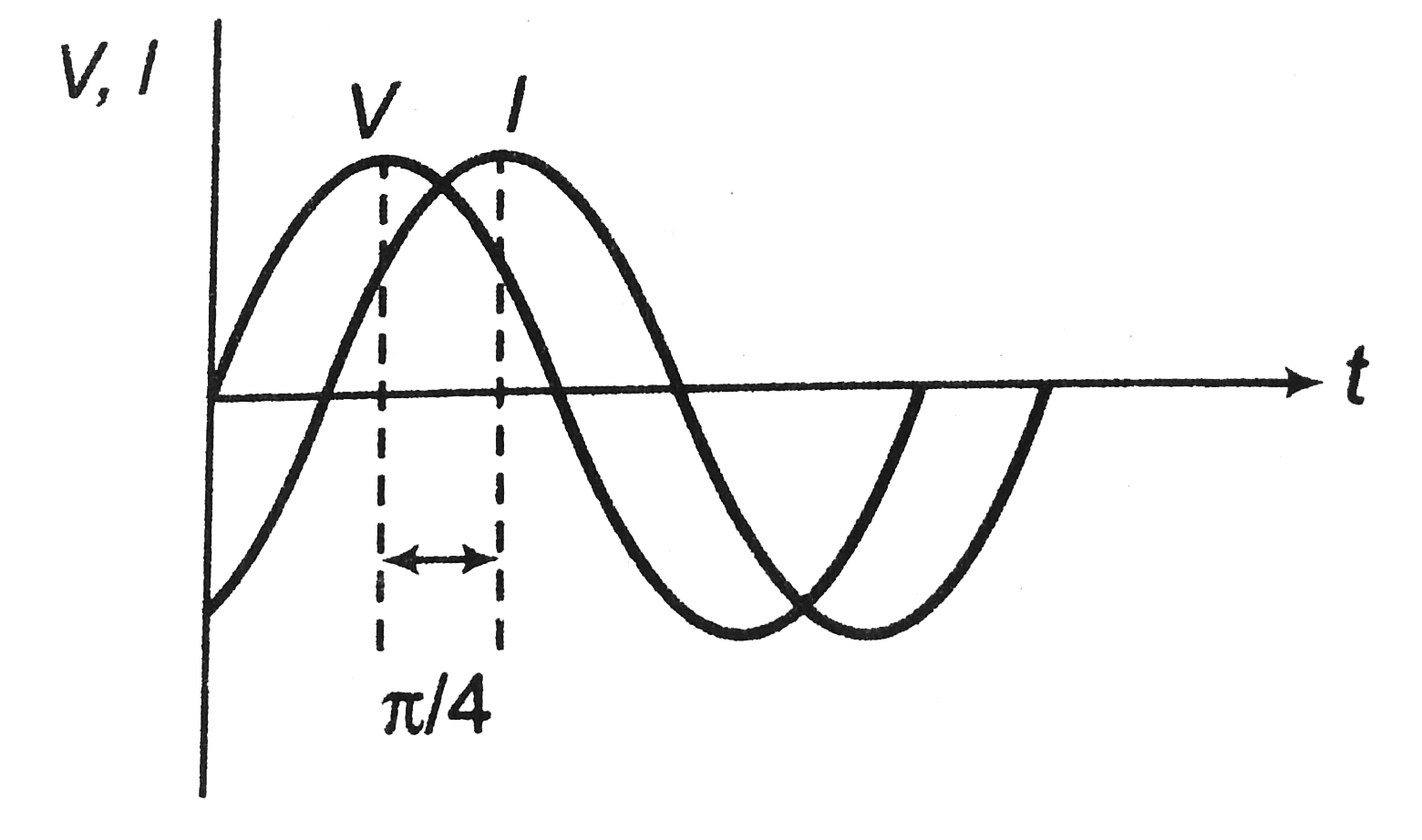A seriesLCR circuit is connected to an ac voltage source. When L is removed from the circuit, the phase difference between current and voltage is π3. If instead C is removed from the circuit phase difference is agin π3 between current and voltage. Power factor of circuit is:
zero
0.5
1
-1
To solve the problem, we need to analyze the phase difference in the series LCR circuit under different conditions and then determine the power factor of the circuit.
1. Understanding the Circuit:
- We have a series LCR circuit connected to an AC voltage source. The components are an inductor (L), a capacitor (C), and a resistor (R).
2. Removing the Inductor (L):
- When the inductor is removed, we are left with an RC circuit. The phase difference (φ) between the current and voltage is given as π3.
- In an RC circuit, the phase difference is given by:
tanϕ=XCR
- Here, XC is the capacitive reactance. Since ϕ=π3, we have:
tanπ3=√3
- Therefore, we can write:
XCR=√3⟹XC=√3R
3. Removing the Capacitor (C):
- Now, if we remove the capacitor instead, we have an RL circuit. The phase difference is again π3.
- In an RL circuit, the phase difference is given by:
tanϕ=XLR
- Here, XL is the inductive reactance. Again, since ϕ=π3:
tanπ3=√3
- Thus, we have:
XLR=√3⟹XL=√3R
4. Finding the Power Factor in the LCR Circuit:
- In the LCR circuit, the phase difference (φ) is given by:
tanϕ=XC−XLR
- Substituting the values we found:
XC=√3RandXL=√3R
- Therefore:
tanϕ=√3R−√3RR=0R=0
- This implies that ϕ=0.
5. Calculating the Power Factor:
- The power factor (PF) is defined as:
Power Factor=cosϕ
- Since ϕ=0:
Power Factor=cos(0)=1
Final Answer:
The power factor of the circuit is 1.
- We have a series LCR circuit connected to an AC voltage source. The components are an inductor (L), a capacitor (C), and a resistor (R).
- When the inductor is removed, we are left with an RC circuit. The phase difference (φ) between the current and voltage is given as π3.
- In an RC circuit, the phase difference is given by:
tanϕ=XCR
- Here, XC is the capacitive reactance. Since ϕ=π3, we have:
tanπ3=√3
- Therefore, we can write:
XCR=√3⟹XC=√3R
- Now, if we remove the capacitor instead, we have an RL circuit. The phase difference is again π3.
- In an RL circuit, the phase difference is given by:
tanϕ=XLR
- Here, XL is the inductive reactance. Again, since ϕ=π3:
tanπ3=√3
- Thus, we have:
XLR=√3⟹XL=√3R
- In the LCR circuit, the phase difference (φ) is given by:
tanϕ=XC−XLR
- Substituting the values we found:
XC=√3RandXL=√3R
- Therefore:
tanϕ=√3R−√3RR=0R=0
- This implies that ϕ=0.
- The power factor (PF) is defined as:
Power Factor=cosϕ
- Since ϕ=0:
Power Factor=cos(0)=1
The power factor of the circuit is 1.
Topper's Solved these Questions
Similar Questions
In an a.c. circuit average power consumed depends on the phase difference between current and voltage in the circuit.
View SolutionIn an electrical circuit R,L,C and an AC voltage source are all connected in series. When L is removed from the circuit, the phase difference between the voltage and the current in the circuit is π/3. If instead, C is removed from the circuit, difference the phase difference is again π/3. The power factor of the circuit is
View Solution
Knowledge Check
In an electrical circuit R,L, C and a.c voltage source are all connected in series. When L is removed from the circuit , the phase difference between the voltage and current in the circuit is π/6. If instead ,C is removed from the circuit , the phase difference is again π/6 . The power factor of the circuit is
A12B1√2C1D√32In an electrical circuit R,L,C and an AC voltage source are all connected in series. When L is removed from the circuit, the phase difference between the voltage and the current in the circuit is π/3. If instead, C is removed from the circuit, difference the phase difference is again π/3. The factor of the circuit is
A12B1√2C1D√32An Ac voltage V=V0sin100t is applied to the circuit, the phase difference between current and voltage is found to be π4, then
 .AR=100Ω,C=1μFBR=1Ω,C=10μFCR=410kΩ,L=1HDR=1kΩ,L=10H
.AR=100Ω,C=1μFBR=1Ω,C=10μFCR=410kΩ,L=1HDR=1kΩ,L=10H
The phase angle between current and voltage in a purely inductive circuit is
View SolutionThe phase difference between input and output voltage of a CE circuit is
View SolutionIn series LCR circuit, the phase difference between voltage across L and voltage across C is
View SolutionIn an AC circuit XC=XL. The phase differe3nce between the current and voltage will be
View SolutionThe phase difference between the current and voltage of a LCR series a.c. circuit at resonance is
View Solution
